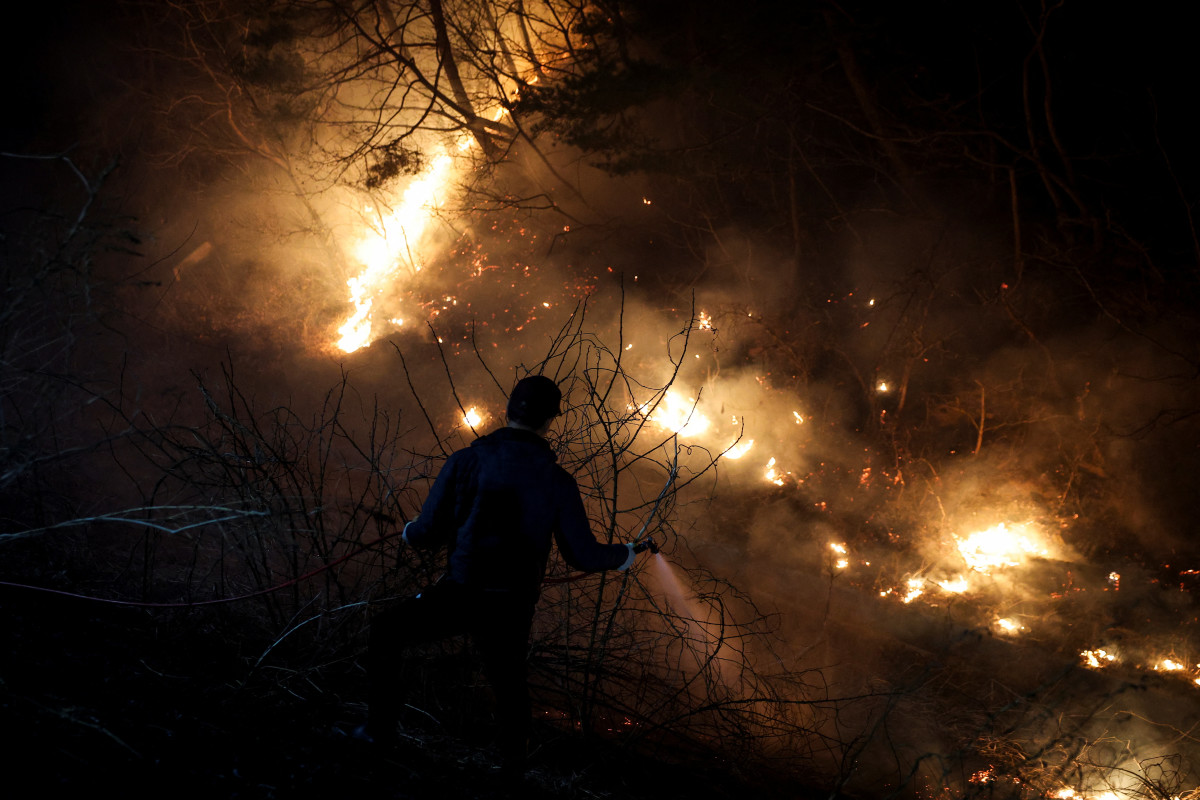Authorities define the huge fires in southeast Korea as the “most serious fires” ever known, the local and international media outlets reported on Wednesday.
“The fires are one of the most serious the state has ever known, the situation is not good,” declared the temporary president of South Korea, Han thin-heo Returned to his position this week after being ousted in December. “We have received assistance from the American forces in our territory. Strong winds brown the fire. We will spread all possible national resources to fight flames,” he added.
According to the authorities, most of those who are scored in fires are in their 60s and 70s, as a local police official gave the Reuters Association. More than 27,000 people were evacuated from their homes following the fires that started last Friday.
In addition to losses in the soul, a fire helicopter has been crashed today to extinguish the fires and the pilot within it. An appearance reported to Reuters that the helicopter began to make a strange noise before crashing. “He exploded completely,” he told Reuters until the event.
The fire also caused significant cultural damage: the destruction of the Gansea Temple, a Buddhist temple over 1,300 years considered a national heritage site in the country. The temple, built in 681, was the main temple of the Jogiya Order in Korean Buddhism. A number of UNESCO World Heritage Sites are in danger, including the Ahoe Traditional Village (Hahoe) and the Confucian Beyongsan Academy in the city of Andong. The authorities sprayed combustion materials in an attempt to protect these sites.
Lee Beyung-DuForest disasters expert at the National Forest Institute, noted in a conversation with Reuters that the fire in Aleysaong, which only 68% of which has been shown, showed “circumference and unimaginable speed” in its spread, and was exacerbated by intense winds.
He said climate change is expected to increase the frequency of fires in the world, mentioning the extraordinary fires that have hurt Los Angeles in January and northeastern Japan. “We must admit that great fires are going to increase, and for that we need more resources and trained manpower,” he told the news agency.
It turns out that the Forest Services in Korea encounters technical problems in its Russian helicopter fleet. Eight helicopters out of 48 have been disabled since last year due to Ukraine war sanctions that prevent imports of spare parts, according to the remarks of a parliament member from the Democratic Party last October.
According to the authorities, from nearly 30 fires that broke out since last Friday, eight is still burning. The fire crews were able to take over 70% of the largest fire, which has signed some 15,000 Qatar (37,000 dunams).
More than 10,000 fire fighters, including hundreds of police officers and military units, operate in four separate areas, with 87 helicopters, according to a report by the Korean safety ministry. In addition, about 500 prisoners were evacuated by prison facilities in the Northern Gionangang District during a Tuesday night, the Jonahup news agency reported.
The country’s forecast is rain views across South Korea on Thursday, but only about 5 to 10 mm is expected to fall in areas affected by the fire – an amount that may be insufficient to significantly assist.
The first fire broke out on Friday afternoon in Sanchong County, about 160 km southeast of the capital of Seoul.
